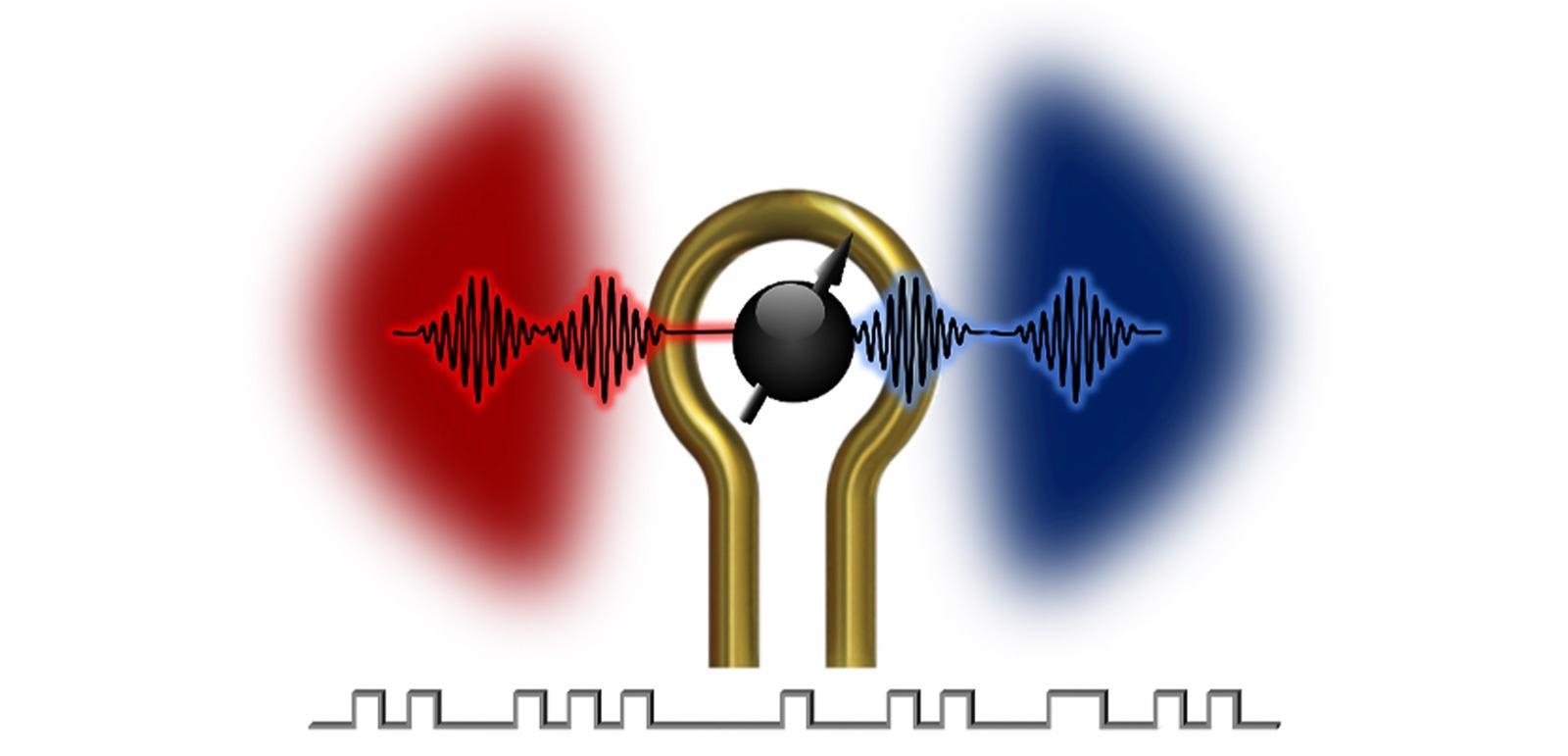Similar to the entry and exits gates located in subways, parks or gardens, electronics also have gates. Such gates tend to control the flow of information from one place to another through an electrical signal.
 New method for information processing: The coherent information exchange (black undulating lines) between magnons (shaded red area) and microwave photons (shaded blue area) is controlled by turning an electric pulse on and off (square wave at bottom). Image Credit: Xufeng Zhang, Argonne National Laboratory.
New method for information processing: The coherent information exchange (black undulating lines) between magnons (shaded red area) and microwave photons (shaded blue area) is controlled by turning an electric pulse on and off (square wave at bottom). Image Credit: Xufeng Zhang, Argonne National Laboratory.
However, a difference from the garden gate is that the opening and closing of electronic gates must be controlled several times quicker compared to the blink of an eye.
Researchers at the U.S. Department of Energy’s (DOE) Argonne National Laboratory and the University of Chicago’s Pritzker School of Molecular Engineering have designed a special approach for obtaining an effective gate operation with a form of information processing known as electromagnonics.
This important breakthrough enables real-time control of information transfer between microwave photons and magnons. This can also lead to a new generation of classical electronics and quantum signal devices that can be employed in numerous applications like low-power computing, signal switching and quantum networking.
Signal processing that couples spin waves and microwaves is a high-wire act. The signal must remain coherent despite dissipations and other outside effects threatening to throw the system into incoherence.
Xufeng Zhang, Assistant Scientist, Center for Nanoscale Materials, Argonne National Laboratory
Microwave protons are elementary particles constituting the electromagnetic waves utilized in, for instance, wireless communications. Magnons, on the other hand, are the particle-like representatives of “spin waves.” In other words, they are a wave-like disturbance in an ordered array of microscopically aligned spins found in some magnetic materials.
Many research groups are combining different types of information carriers for information processing. Such hybrid systems would enable practical applications that are not possible with information carriers of a single type.
Xufeng Zhang, Assistant Scientist, Center for Nanoscale Materials, Argonne National Laboratory
In hybrid magnonic systems, coherent gate operation (i.e., the control over on, off, and duration of the magnon-photon interaction) has been a long-sought goal. Theoretically, this can be realized by tuning the energy levels quickly between the magnon and photon, but the tuning relies on the change in the geometric configuration of the device.
This usually requires more time than the magnon lifetime, which is of the order of 100 ns (one-hundred billionths of a second). Due to the lack of a quick tuning mechanism for streamlining interaction between photons and magnons, real-time gating control has been an unviable task.
By employing a novel method that involves energy-level tuning, the researchers achieved fast switching between photonic and magnonic states within a shorter span compared to the magnon or photon lifetimes. This period lies between 10 and 100 ns.
We start by tuning the photon and magnon with an electric pulse so that they have the same energy level. Then, the information exchange starts between them and continues until the electric pulse is turned off, which shifts the energy level of the magnon away from that of the photon.
Xufeng Zhang, Assistant Scientist, Center for Nanoscale Materials, Argonne National Laboratory
According to Zhang, the team was capable of controlling the flow of information using this mechanism so that the information is completely in the photon or the magnon, or someplace in between. This was possible through an innovative device design that enables nanosecond tuning of a magnetic field that regulates the energy level of the magnon. The desired coherent gate operation was achieved using the tunability factor.
The study sets a new dimension for electromagnetics. Apart from working in the classical electronic regime, the demonstrated mechanism can also be readily employed for manipulating magnonic states in the quantum regime. This paves the way for electromagnonics-based signal processing in quantum computing, sensing and communications.
This study was financially supported in part by the DOE Office of Basic Energy Sciences.
Besides Zhang, the authors involved in the study were Jing Xu, Changchun Zhong, Xu Han, Dafei Jin and Liang Jiang.
Journal Reference:
Xu, J., et al. (2021) Coherent Gate Operations in Hybrid Magnonics. Physical Review Letters. doi.org/10.1103/PhysRevLett.126.207202.